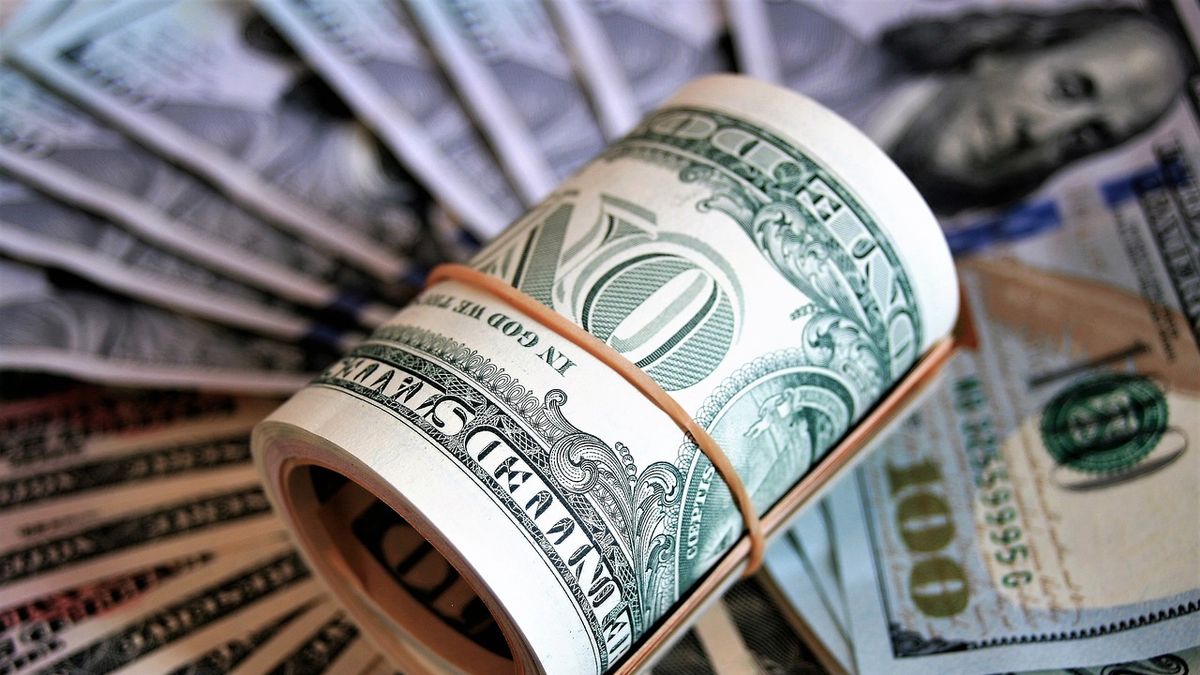He global dollar rose slightly on Friday while the world’s main currencies remained in suspense at the end of a politically turbulent week, where previous sales lost momentum due to a report of employment which showed higher unemployment and modest job gains overall, ahead of a report from inflation next week that could reinforce or cast doubt on expectations for interest rate cuts later this month.
He dollar index — which measures the greenback’s performance relative to a basket of six other internationally relevant currencies — rose 0.3% to 106, after falling to a three-week low in the previous session.
In turn, it recovered from a three-week low against the euro, which last traded down 0.3% at $1.0561. The common European currency was on track to end the week down 0.2%, recording losses in four of the last five weeks, in the midst of a week convulsed by the fall of the French prime minister, Michel Barnier, in moments where the president Emmanuel Macron intensifies dialogue to sustain his government.
In front of yen, The dollar advanced from session lows to trade little changed at 150 yen. The US currency will end the week up 0.2% against the Japanese unit, having gained in three of the last four weeks.
Employment in the United States
“The (payroll) report is noisy, but weak enough to reinforce the positioning adjustment in the foreign exchange market,” he wrote. Mark McCormick head of foreign exchange and emerging markets strategy at TD Securities, in a research note.
He pointed out that the dollar previously followed the downward trend of Treasury yields, “reflecting the fact that the market sees enough here to expect another cut in the Federal Reserve (Fed) this month.”
“He CPI (consumer price index) next week will likely be the last useful data for the December Fed meeting, but we think the path of least resistance remains some weakness in the US dollar, which offers a great opportunity to buy in the fall in early 2025,” McCormick wrote.
Market participants sold dollars earlier after data showed the unemployment rate rose slightly to 4.2%, after holding at 4.1% for two consecutive months.
The increase in the rate of unemployment reflected the weakness of household employment. The smaller and more volatile household survey, from which the unemployment rate is compiled, showed a decline of 355,000 jobs. Household employment also fell in October.
On the other hand, the non-farm payrolls Jobs rose by 227,000 last month, after increasing by 36,000 in October (an upwardly revised figure), from 12,000. The average monthly increase in jobs over the last four reports now stands at just under 150,000, lower than what many economists believe is necessary to provide enough work to support a growing population.
Economists polled by Reuters had forecast payrolls would accelerate by 200,000 jobs last month. Estimates ranged from 155,000 to 275,000 jobs.
Bloomberg had forecast 225,000 jobs and some analysts cited that figure to conclude that payrolls barely beat expectations, suggesting the Fed is unlikely to pause its easing cycle.
The dollar then gave up losses after US polls University of Michigan for December showed that consumer confidence rose more than expected, while one-year inflation expectations rose to 2.9% from 2.6 last month.
After the payrolls, US rate futures priced in an 85% chance that the Fed will lower interest rates by 25 basis points at its policy meeting later this month, up from about 70%. just before the publication of the data, according to calculations by LSEG.
Meanwhile, the odds of a pause fell to 15% from 30% before the jobs report.
“The Fed will effectively cut 25 basis points, simply to keep policy moving from restrictive territory into neutral territory,” James Knightley, chief US international economist at ING, wrote in a research note.
“However, they are expected to signal a slowdown in the pace of cuts and there is likely to be a pause at the January FOMC meeting.”
The risk to that vision, he noted, is that a very positive core CPI will be published next week. He said the consensus is that there will be a 0.3% increase, but as long as it is closer to 0.25% rather than 0.349%, Knightley believes the Fed will opt to cut rates on December 18.
Source: Ambito
I am Pierce Boyd, a driven and ambitious professional working in the news industry. I have been writing for 24 Hours Worlds for over five years, specializing in sports section coverage. During my tenure at the publication, I have built an impressive portfolio of articles that has earned me a reputation as an experienced journalist and content creator.




